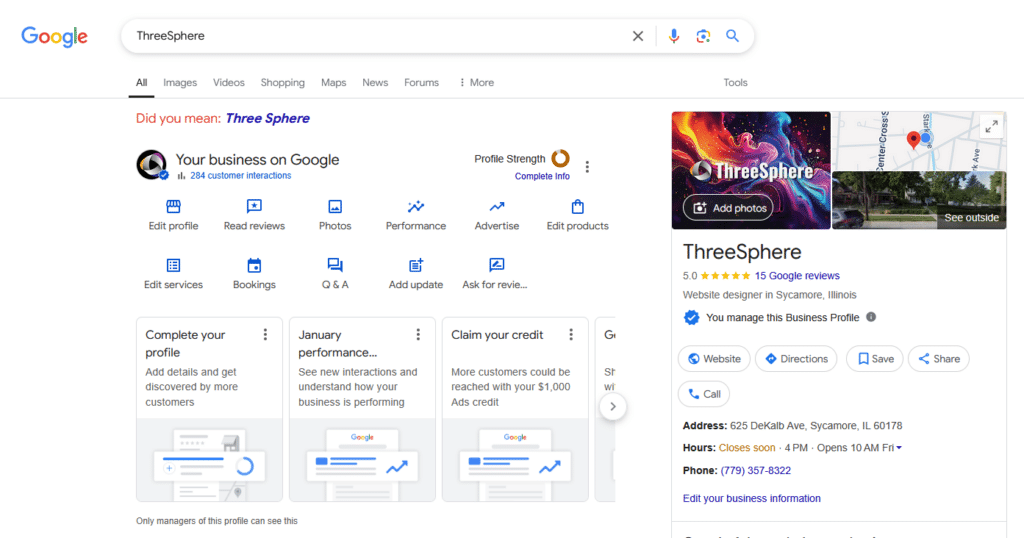The Importance of Regular Website Redesigns
Experts in web design and digital marketing generally recommend a complete website overhaul every 2-3 years. This timeline is influenced by the rapid pace of technological advancements and evolving design trends that define the digital landscape. In just a few years, new tools, security measures, and best practices emerge, rendering older sites less effective and potentially vulnerable. A website that remains unchanged for too long can appear outdated, reflecting poorly on the brand’s image. Additionally, a dated site may lack essential features like mobile responsiveness, interactive elements, or modern UX principles, which are increasingly important in meeting the expectations of today’s internet users.
Frequent updates help ensure that your website aligns with current user expectations and industry standards. Users now demand fast-loading pages, seamless navigation, and visually appealing designs that work flawlessly on any device. If your site fails to deliver these experiences, visitors may leave quickly, resulting in higher bounce rates and lower engagement metrics. Moreover, search engines like Google frequently update their algorithms, emphasizing mobile compatibility, page speed, and usability. A website that hasn’t been refreshed in years may struggle to keep up with these changes, impacting its search ranking and visibility. By planning regular redesigns, you can maintain a website that attracts, engages, and retains visitors, giving your business a competitive edge in the digital space.
Why Redesign Every 2-3 Years?
The recommendation to undertake a website redesign every 2-3 years stems from the rapid pace of web development advancements and shifting user expectations. With new tools, features, and best practices constantly emerging, a website built a few years ago may lack the latest innovations that enhance its performance and functionality. Regularly updating your website through a redesign ensures it reflects modern design trends and incorporates functionality that resonates with today’s users. A failure to redesign can result in an outdated appearance, potentially impacting user perception and diminishing brand credibility. A fresh, modern site demonstrates that your brand is committed to staying current with industry standards and user expectations.
An outdated website can also face technical limitations that adversely affect the user experience, such as slower load times, inadequate mobile responsiveness, and outdated security protocols. As technology continues to evolve, new security features are introduced to combat emerging cyber threats, making older sites more vulnerable to attacks if left unchanged. Performance enhancements, like faster loading speeds and optimized frameworks, are essential for both user satisfaction and SEO rankings. By committing to a website redesign every few years, you can ensure that your site remains secure, performs smoothly, and provides a user-friendly experience that meets contemporary standards, keeping your audience engaged and satisfied.
The Impact of Rapid Technology Advancements
Website redesign plays a crucial role in keeping up with the fast-paced advancements in web development technology. With each passing year, innovations in security, performance, and functionality emerge, shaping the standards for modern websites. By regularly redesigning your website, you can ensure that it remains compatible with the latest updates and maintains a seamless user experience. This ongoing improvement helps prevent technical issues and security vulnerabilities that could impact both user trust and site performance. A proactive approach to redesign not only addresses compatibility with new technology but also ensures that the site functions optimally in an ever-evolving digital environment.
As technology advances, new frameworks and tools are developed to streamline website operations and enhance user experience. Redesigning your website periodically allows you to take advantage of these innovations, which can improve speed, accessibility, and overall performance. Staying updated with these advancements keeps your website efficient and positions your business as a forward-thinking, tech-savvy brand. Embracing the latest frameworks and performance enhancements enables you to remain competitive and appealing to users who expect modern and seamless digital experiences. In a landscape where technology is constantly evolving, regularly updating your website ensures that it remains an effective asset for your business.
Changing User Experience (UX) Expectations
As user experience (UX) expectations continue to evolve, a website redesign becomes essential for meeting the needs of today’s digital audience. Modern users expect seamless, intuitive, and visually appealing interactions on every website they visit. If your website feels outdated, cluttered, or difficult to navigate, users are more likely to abandon it in favor of a competitor’s site. Regularly updating your website helps keep it user-friendly and aligned with current design trends, fostering a positive experience that encourages visitors to stay longer and engage with your content. An optimized UX can lead to higher conversion rates, ultimately benefiting your business by building customer loyalty and trust.
A website redesign with UX in mind is crucial for reducing bounce rates and improving engagement. When a site is easy to navigate and visually appealing, visitors are more likely to explore further and spend more time browsing, rather than leaving after a quick glance. Keeping up with UX trends, such as streamlined navigation, mobile responsiveness, and interactive elements, ensures that your site meets the standards of modern users. By investing in regular updates, you show your audience that you value their experience, which can enhance brand perception and encourage repeat visits. A well-designed, user-friendly website is key to capturing and retaining audience interest in an increasingly competitive digital space.

SEO Best Practices Are Constantly Updated
SEO, or search engine optimization, is an ever-evolving field, with search engines like Google frequently updating their algorithms to provide better search results for users. This means that a website built several years ago may not meet the latest SEO standards, putting it at a disadvantage when competing for visibility. Older sites often lack crucial optimizations, such as mobile responsiveness and improved loading speeds, which are now essential ranking factors. By keeping up with these changes, businesses can maintain or even improve their position in search results, helping to attract a larger audience and drive organic traffic.
A regular website redesign strategy is essential for staying aligned with modern SEO requirements. As search engines prioritize user experience and quality content, businesses must continuously update their websites to remain competitive. Incorporating SEO best practices, such as optimizing for mobile devices, improving page load times, and enhancing site structure, can significantly impact search rankings. A well-optimized site not only ranks higher but also delivers a smoother experience for users, leading to increased engagement and conversions. By integrating SEO strategies into your website redesign efforts, you can ensure your site remains visible, relevant, and accessible in a rapidly changing digital landscape.
The Importance of Mobile Optimization
With the continuous rise in mobile internet users, ensuring that your website is optimized for mobile is more critical than ever. A website redesign is essential to keep up with the changing ways users access the internet, especially as more people rely on smartphones and tablets. If your website was designed three years ago, it might lack the responsiveness needed for an optimal mobile experience. This can result in users struggling to navigate your site on smaller screens, leading to missed engagement and lost business opportunities. By prioritizing mobile optimization, you make your website accessible and user-friendly on any device.
A well-timed website redesign guarantees that your site adjusts seamlessly to various screen sizes, providing a consistent and enjoyable experience across all devices. Mobile-responsive websites not only meet user expectations but are also favored by search engines, which consider mobile optimization a key factor in search rankings. Regularly redesigning and updating your website with mobile users in mind can lead to improved traffic, increased engagement, and higher conversion rates. By addressing mobile optimization through each website redesign, you ensure that your online presence remains relevant, accessible, and competitive in a mobile-first digital world.
Keeping Up with Performance Improvements
In today’s fast-paced digital environment, maintaining high website performance is crucial for user satisfaction and engagement. Standards for website speed and efficiency evolve frequently, and users now expect pages to load almost instantly. A website redesign is an effective way to keep up with these demands, as older websites often have slower loading times and consume more resources, which can lead to increased bounce rates. Regular updates and redesigns allow your website to incorporate the latest advancements in performance optimization, ensuring that it meets modern standards and provides a seamless experience for visitors.
A well-executed website redesign can greatly improve not only the user experience but also your site’s SEO rankings. Search engines like Google prioritize fast-loading, high-performing websites, making performance enhancements essential for maintaining visibility in search results. By optimizing speed and efficiency, you increase the likelihood that users will stay on your site longer, explore your content, and engage with your brand. Redesigning your website to align with current performance standards is a proactive approach to staying competitive and retaining visitors in an ever-evolving digital landscape.

Recognizing Outdated Design and Aesthetics
A visually outdated website can significantly impact your brand’s image, potentially causing users to perceive your business as out of touch or irrelevant. Design trends evolve quickly, and an aesthetic that once looked fresh and modern may now appear dated, giving the wrong impression to visitors. A website redesign can address this issue by refreshing your site’s look, aligning it with current design standards and user expectations. Modern web design emphasizes clean, simple layouts, bold visuals, and intuitive navigation, all of which can enhance your brand’s credibility and appeal.
When a website redesign incorporates up-to-date aesthetics, it contributes to a more positive user experience and helps attract and retain visitors. The impact of an outdated design goes beyond aesthetics; it can also affect usability and functionality. Websites that look like they belong in a bygone era may be less intuitive and harder to navigate, which can frustrate users and increase bounce rates. Regularly updating your design allows you to keep up with the latest trends, ensuring your website remains engaging, user-friendly, and reflective of your brand’s professionalism and modernity.
Lack of Modern Features is a Red Flag
In the fast-paced digital age, users have come to expect specific functionalities on websites, such as seamless navigation, mobile responsiveness, and interactive elements that enhance their browsing experience. A website that lacks these features can appear outdated and may feel clunky or frustrating to users, which can discourage them from engaging further. Modern users are accustomed to smooth, intuitive online experiences, so if your website falls short in this regard, it may drive potential customers away. Regularly incorporating these features through a website redesign can ensure your site meets current user expectations, helping to create a positive first impression and increase user retention.
A website redesign that includes these modern elements not only boosts functionality but also strengthens your brand’s perception as innovative and forward-thinking. A site that lacks features like mobile optimization or easy-to-navigate layouts can cause users to view your brand as outdated or irrelevant. By staying on top of these trends and integrating up-to-date functionalities, you show users that your business values their experience and is committed to staying current. This proactive approach in redesigning your website reinforces your brand’s relevance in the market, making it more appealing to visitors and setting you apart from competitors.
Poor User Experience Indicators
Metrics such as high bounce rates, low engagement, and frequent user complaints are often red flags indicating a poor user experience. When visitors struggle to find information or encounter difficulties navigating the site, it’s a strong signal that a website redesign may be necessary. Websites with outdated or complex layouts can frustrate users, causing them to leave quickly and possibly seek alternatives. Addressing these issues through a comprehensive redesign helps ensure that your site is user-friendly and intuitive, providing visitors with a smoother and more enjoyable browsing experience. Prioritizing user experience is essential to keeping visitors engaged and encouraging them to explore your content.
A website redesign that focuses on improving UX can make a significant difference in how users perceive and interact with your brand. By enhancing navigational features, organizing content more intuitively, and implementing modern design elements, you create an environment that feels welcoming and easy to explore. This attention to UX fosters a positive relationship between users and your brand, as visitors are more likely to stay, interact, and return. Additionally, a redesigned website that prioritizes usability can lead to higher engagement rates, reduced bounce rates, and an overall stronger online presence that reflects well on your business.

Using an Outdated CMS Could Hurt Your Site
Relying on an outdated content management system (CMS) can expose your website to significant issues, making a website redesign essential. An older CMS often lacks support for the latest plugins and modern features, restricting your ability to keep your site updated and secure. Without these crucial updates, your website becomes more susceptible to cyber threats, potentially risking sensitive information and damaging your brand’s reputation. A website redesign, which includes updating your CMS, is a proactive way to ensure your site remains safe, functions effectively, and aligns with industry standards and user expectations.
Opting for a website redesign that incorporates an updated CMS can significantly enhance both performance and operational efficiency. By upgrading to a CMS that supports the latest tools and functionalities, you unlock the potential for seamless integrations, improved content management, and enhanced user experience. This upgrade allows you to streamline website maintenance, reduce downtime, and add new features more easily. A modern CMS also ensures compatibility with essential plugins, which can enhance your site’s performance, responsiveness, and SEO potential. Ultimately, a redesign with an up-to-date CMS is a smart investment to future-proof your website and keep it competitive in an evolving digital landscape.
Security Concerns with Older Websites
Websites created several years ago often lack the robust security standards necessary to combat today’s cyber threats, making them prime targets for potential attacks. As technology advances, so do the tactics used by cybercriminals, meaning an outdated site is at a higher risk for security breaches. A website redesign is a proactive way to integrate advanced security measures that protect sensitive user data and maintain the integrity of your site. With enhanced security features, you can safeguard your business from malicious threats and demonstrate your commitment to protecting users’ information.
Incorporating updated security protocols through a website redesign not only protects your data but also boosts user confidence in your brand. Modern security enhancements, such as SSL certificates, two-factor authentication, and regular vulnerability scans, are critical for establishing a secure online environment. These updates ensure that your website meets current standards, creating a safe browsing experience for visitors. In a digital landscape where privacy concerns are growing, taking steps to secure your website also strengthens your brand’s reputation and builds trust with your audience. By staying updated, you create a safer space for users and a more resilient platform for your business operations.
Competitor Advancements and Industry Trends
Keeping pace with competitor advancements and industry trends is essential for staying relevant in the digital landscape. If your competitors are regularly updating or redesigning their websites, it signals that they’re adapting to changing user expectations and technological advancements. A website redesign is an opportunity to level the playing field, ensuring your site doesn’t fall behind. By updating your website, you demonstrate your commitment to keeping up with industry standards, which can attract more visitors and give your brand a competitive edge.
A website redesign that embraces the latest features and visual trends projects a forward-thinking image to potential customers. In today’s fast-paced market, users are more likely to trust and engage with brands that appear up-to-date and in tune with modern technology. A fresh, visually appealing website with contemporary features instills confidence in visitors, reinforcing the perception that your business is credible and adaptable. By consistently monitoring competitor activity and industry developments, you can make strategic decisions about when to refresh your website, ensuring you remain competitive and appealing within your industry.
Conclusion: Stay Current to Stay Competitive
While the general recommendation to undergo a website redesign every 2-3 years is a valuable guideline, the decision should ultimately be influenced by your site’s performance, user feedback, and unique business needs. Conducting regular assessments of your website’s functionality, visual appeal, and usability is essential for identifying whether it aligns with current user expectations and industry standards. By proactively spotting areas for improvement, you ensure that your website continues to be an asset that enhances your brand rather than a liability in today’s competitive digital space.
In a rapidly changing digital landscape, staying updated with the latest technology and design trends is crucial for sustaining a strong online presence. If your website exhibits signs of aging—such as outdated design, missing features, or declining performance—this indicates it may be time for a website redesign. A modernized, fresh website not only engages visitors but also strengthens your brand’s relevance, ultimately helping you stay competitive and attract new audiences in an ever-evolving market.
How useful was this post?
Click on a star to rate it!
Average rating 0 / 5. Vote count: 0
No votes so far! Be the first to rate this post.
Author
-

Meet Anthony Ernst, the creative force behind ThreeSphere. With a passion for art and a knack for business, Anthony is a multi-talented entrepreneur who wears many hats. As the owner of ThreeSphere, he combines his expertise in web development with his artistic vision to craft stunning and functional websites for clients.
View all posts








